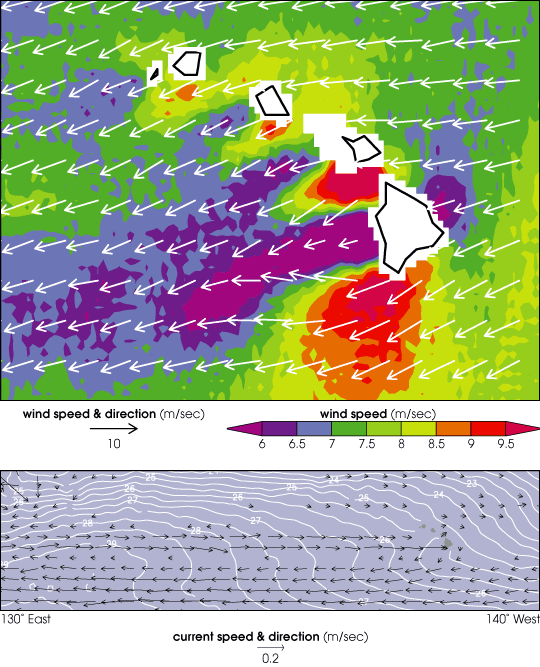


The Hawaiian Islands trigger an extraordinary interaction between wind and ocean that extends thousands of kilometers. This island effect is much larger than has ever been observed by scientists before.
Using data from Earth-observing satellites, researchers discovered this unusually long island "wake," which includes a narrow eastward-flowing ocean current extending 8,000 kilometers (4,900 miles) from Asia to Hawaii. While scientists have known of an eastward current off of Asia for some years, this new research shows that it extends from Asia to the Hawaiian Isles.
The top image above shows the winds around the Hawaiian Islands measured by the Seawinds instrument aboard QuikScat during August 1999. Trade winds blow from east to west (right to left in the image). Between islands the winds increase, while in the wake of the islands the winds are remarkably weaker. The bottom image shows the ocean current formed by the islands' wake. Arrows indicate current direction and speed (derived from a general circulation model), while white contours show ocean temperatures (measured by the Tropical Rainfall Measuring Mission). The warm water of the current generates winds which sustain the current for thousands of miles.
For more information, images, and an animation, read Satellites Reveal Hawaiian Isles' Long Tail of Wind and Water and Far-Reaching Effects of the Hawaiian Islands on the Pacific Ocean-Atmosphere System.
Images courtesy Shang-Ping Xie, University of Hawaii International Pacific Research Center and Meteorology Department, and Timothy Liu, NASA Jet Propulsion Laboratory Seawinds science team.